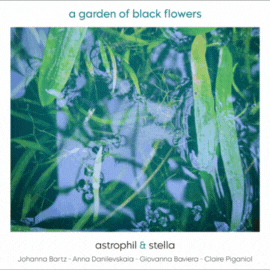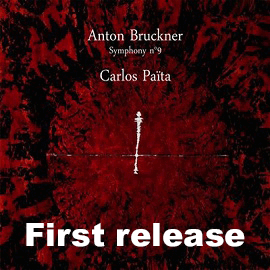William Grant Still (1895-1978), der vielfach ausgezeichnete Altmeister unter den afroamerikanischen Komponisten, schrieb eine neo-romantische, nicht selten von afroafrikanischen Elementen geprägte Musik. Sie ist leicht zugänglich und die meisten seiner Werke haben Charakter genug, um einen bleibenden Eindruck zu hinterlassen.
Dieses Album enthält Weltersteinspielungen von neun Werken, von denen die Violinsuite mit 17 Minuten das längste ist.
Avlana Eisenberg, Music Director des Boston Chamber Symphony, dirigiert zunächst das auf einer Volksballade basierende Can’t You Line ‘Em (1940). Dem Bocklet zufolge fängt es den Rhythmus und den Geist der Baukolonnen beim ‘tie-shuffling’, dem Ausrichten von Eisenbahnschienen, ein.
Das ruhige, kontemplative Summerland führt zu Quit Dat Fool’nish (1935), ein « jazziges Treiben mit Stills schelmischem Hund heraufbeschwört, Stills schelmischem Hund Shep. »
Pastorela (1946) ist nach den Worten des Komponisten « ein Tonbild einer kalifornischen Landschaft, friedlich, aber aufregend, das in einigen Aspekten ein Gefühl der Trägheit und in anderen ein Gefühl der Lebendigkeit hervorruft ».
Die American Suite entstand um 1918, während Stills Studium. Sie beginnt mit einem lyrischen indianischen Liebeslied, gefolgt von einem Tanzsatz und einem Lamento.
Fanfare for the 99th Fighter Squadron (1945) soll den Stolz, den Mut und die patriotische Entschlossenheit der Tuskegee Airmen zeigen, die im Zweiten Weltkrieg dienten. Es wurde von Leopold Stokowski und dem Los Angeles Philharmonic uraufgeführt.
Serenade (1957) war ursprünglich als Cellokonzert geplant, das von Stills Freund Gregor Piatigorsky vorgeschlagen wurde. Stattdessen wurde es ein Orchesterwerk.
Die Violinsuite von 1943 ist eine musikalische Impression von drei Kunstwerken: African Dancer, eine Bronzestatue von Richmond Barthé (Whitney Museum New York), Mother and Child, eine Farblithografie von Sargent Johnson (Museum of Modern Art, San Francisco), Gamin, eine Bronzebüste von Augusta Savage (Smithsonian, Washington).
Den Abschluss des Albums bildet Threnody: In Memory of Jean Sibelius (1965). « Stills Hommage ist ein eindringlicher Abschied, der den Geist von Sibelius widerspiegelt » heißt es im Booklet.
Dieses abwechslungsreiche und gefällige Programm wird in engagierten Interpretationen präsentiert, in der sowohl die Soloviolinistin Zina Schiff wie auch ihre Tochter, die Dirigentin Avlana Eisenberg, sich vorbildlich einsetzen, um diese Musik in rhetorischen und geschmackvollen Interpretationen zu Gehör zu bringen. Gerade bei einem für Musik des XX. Jahrhunderts derart melodischen und unterhaltsamen Inhalt ist Geschmack eine wichtige Interpretations-Richtlinie. Und so ist dies denn eine attraktive und publikumsfreundliche CD, bei der es keinen Grund gibt, die Nase zu rümpfen.
William Grant Still (1895-1978), the multi-award-winning veteran African-American composer, wrote neo-romantic music not infrequently influenced by Afro-African elements. It is easily accessible and most of his works have enough character to leave a lasting impression.
This album contains world premiere recordings of nine works, of which the Violin Suite is the longest at 17 minutes.
Avlana Eisenberg, music director of the Boston Chamber Symphony, first conducts Can’t You Line ‘Em (1940), based on a folk ballad. According to the Bocklet, it captures the rhythm and spirit of construction crews ‘tie-shuffling,’ aligning railroad tracks.
The quiet, contemplative Summerland leads to Quit Dat Fool’nish (1935), a « jazzy romp with Still’s mischievous dog evoking, Still’s mischievous dog Shep. »
Pastorela (1946) is, in the composer’s words, “a tone picture of a California landscape, peaceful but exciting, arousing feelings of languor in some of its aspects and of animation in others, presenting an overall effect of unity in its variety.”
The American Suite was written around 1918, during Still’s studies at Wilberforce University in Ohio. It opens with a lyrical Indian love song, followed by a dance movement and a lament.
Fanfare for the 99th Fighter Squadron (1945) is intended to show the pride, courage, and patriotic determination of the Tuskegee Airmen who served in World War II. It was premiered by Leopold Stokowski and the Los Angeles Philharmonic.
Serenade (1957) was originally planned as a cello concerto, suggested by Still’s friend Gregor Piatigorsky. Instead, it became an orchestral work.
The Violin Suite of 1943 is a musical impression of three works of art: African Dancer, a bronze statue by Richmond Barthé (Whitney Museum New York), Mother and Child, a color lithograph by Sargent Johnson (Museum of Modern Art, San Francisco), Gamin, a bronze bust by Augusta Savage (Smithsonian, Washington).
Closing the album is Threnody: In Memory of Jean Sibelius (1965). « Still’s tribute is a haunting farewell, channeling the spirit of Sibelius » says the booklet.
This varied and pleasing program is presented in committed interpretations in which both violinist Zina Schiff and her daughter, conductor Avlana Eisenberg, do an exemplary job of bringing this music to the ear in rhetorical and tasteful interpretations. Especially with such melodic and entertaining content for music of the XX century, taste is an important interpretation guideline. And so this is an attractive and audience-friendly CD, with which there is no reason to turn up one’s nose.

























